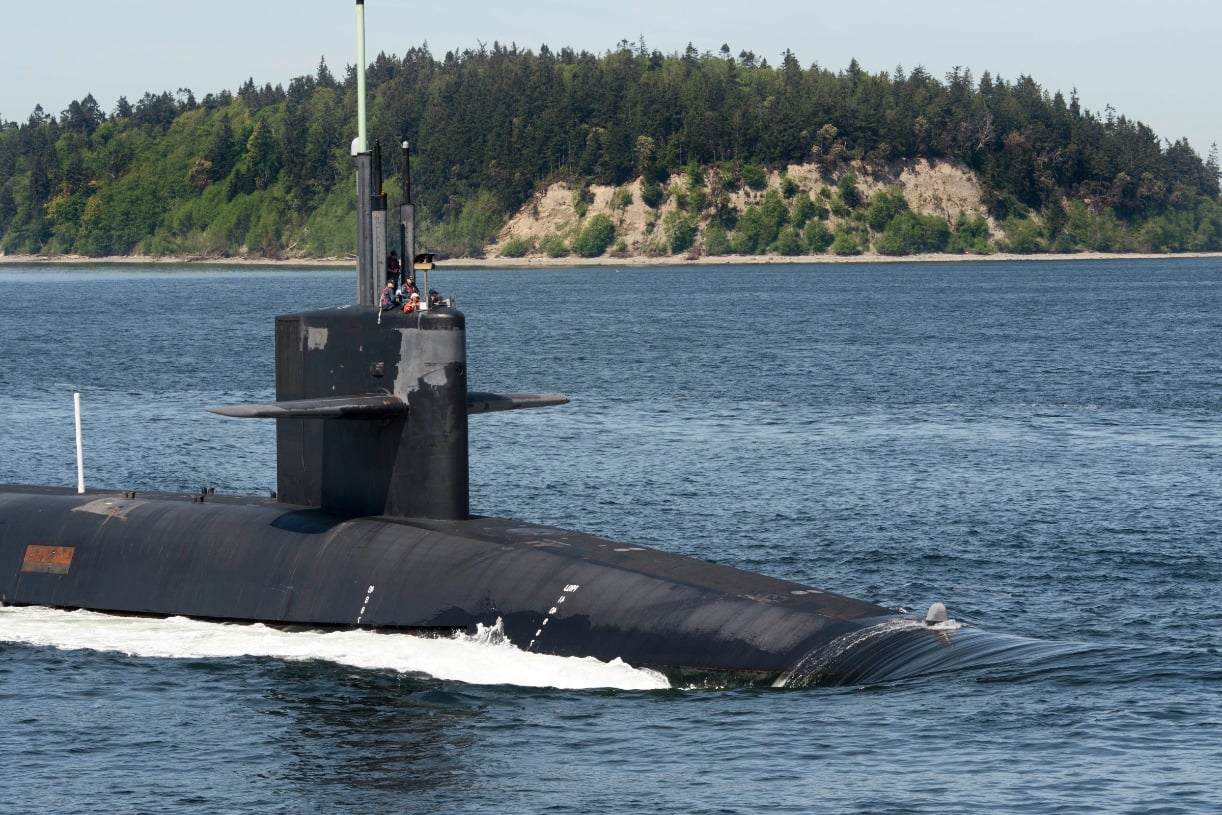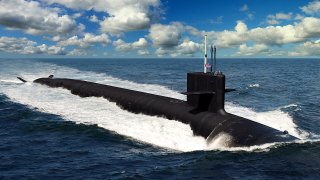The Navy's Columbia-Class Nuclear Submarine Dilemma
The Columbia-class nuclear submarines are set to replace the aging Ohio-class fleet as the cornerstone of the U.S. Navy's sea-based strategic deterrent. Designed to carry ballistic missiles armed with nuclear warheads, these submarines will play a critical role in maintaining the United States' nuclear triad, which also includes land-based missiles and strategic bombers.
What You Need to Know: The Columbia-class nuclear submarines are set to replace the aging Ohio-class fleet as the cornerstone of the U.S. Navy's sea-based strategic deterrent. Designed to carry ballistic missiles armed with nuclear warheads, these submarines will play a critical role in maintaining the United States' nuclear triad, which also includes land-based missiles and strategic bombers.

-Each Columbia-class submarine will feature advanced technology, including a life-of-ship nuclear reactor that eliminates the need for mid-life refueling, reducing maintenance downtime.
-With a planned fleet of 12 submarines, the Columbia-class aims to ensure stealth, endurance, and enhanced capabilities to deter potential adversaries well into the 21st century.
America's Next-Generation SSBN: The Columbia-Class Explained
The U.S. Navy’s Columbia-class nuclear-powered submarine is one of the maritime service’s highest priorities. Yet, procuring these boats has proven to be a nightmare, although to be fair, this is not a new development. Most naval platforms have proven to be a nightmare to procure.
The Columbia-class nuclear submarines are key to America’s nuclear triad. Yet, a recent report from the Government Accountability Office (GAO) throws some cold water on the efforts that the Navy has made to ensure that the Columbia-class submarine is ready for action.
A Most Serious Concern
Since 2018, for example, the Navy has shelled out billions of dollars to ensure that the industrial base, which has been languishing for decades, can support the increased demand for advanced nuclear weapons-capable submarines.
However, the GAO report assesses that, while the Navy had no problem spending gobs of tax dollars for this high-priority weapons platform, “the service has failed to ensure that the investments support construction goals or that outsourced work meets the quality expectations.”
That’s a big problem, considering that the resources being dedicated to the Columbia-class submarine are finite and each time these limited resources are wasted, the Navy loses critical time to have this primary weapons platform available.
Further, the national debt is itself a national security concern. Spending billions of dollars on programs that will not deliver the results they promise will lead to an overall decline in the U.S. military’s readiness. It will create critical strategic gaps that American enemies can, and will, exploit.
The Columbia-class submarines are not only an upgrade from the aging Ohio-class submarines, but they integrate the most cutting-edge undersea warfare technologies, including stealth capabilities, advanced sonar systems, and even new propulsion systems. These technological capabilities make the Columbia class a highly effective platform.
The presence of these systems, though, explodes their cost.
Some are quick to point out that the overall economy has struggled with high inflation. This is true. However higher-than-usual inflation does not account for the cost overruns. The GAO report is clear about this. In typical bureaucratic fashion, the Navy threw money around like they were participating in a bachelor party, with little thought of the consequences of that spending or how better that money could have been spent. The Navy handed out money to contractors and provided little oversight.
And the contractors, of course, took advantage.
Congress Doesn’t Know Where the Money Goes
With not an ounce of surprise, not even Congress has oversight of this process. What they have is partial oversight. That’s according to Congressman Joe Courtney (D-Connecticut), who told Breaking Defense that, “[Congress] only sees a basic pie chart” of budget outflows. Indeed, as the Breaking Defense article outlines, where the Navy sends its money and what those contractors do with that money is not publicly available.
Back in the 1990s, most Americans could afford to simply shrug off the obvious waste and corruption in this process. Today, as near-peer rivals are surrounding the United States and outpacing the U.S. military at every turn, these cost overruns could be the decisive factor behind a military defeat at sea and a naval war is coming, sooner than most people like to think.
Unless the Navy gets its act together, and until Congress demands better accountability from those it gives our money to, the United States will not only continue overspending on systems that underperform, but the military will find its capabilities significantly degraded and outmatched by its near-peer rivals, notably China.
Author Experience and Expertise: Brandon J. Weichert
Brandon J. Weichert, a National Interest national security analyst, is a former Congressional staffer and geopolitical analyst who is a contributor at The Washington Times, the Asia Times, and The-Pipeline. He is the author of Winning Space: How America Remains a Superpower, Biohacked: China’s Race to Control Life, and The Shadow War: Iran’s Quest for Supremacy. His next book, A Disaster of Our Own Making: How the West Lost Ukraine, is due October 22 from Encounter Books. Weichert can be followed via Twitter @WeTheBrandon.
All images are Creative Commons or Shutterstock.
From the Vault
Russia Freaked Out: Why the U.S. Navy 'Unretired' the Iowa-Class Battleships
Battleship vs. Battlecruiser: Iowa-Class vs. Russia's Kirov-Class (Who Wins?)


